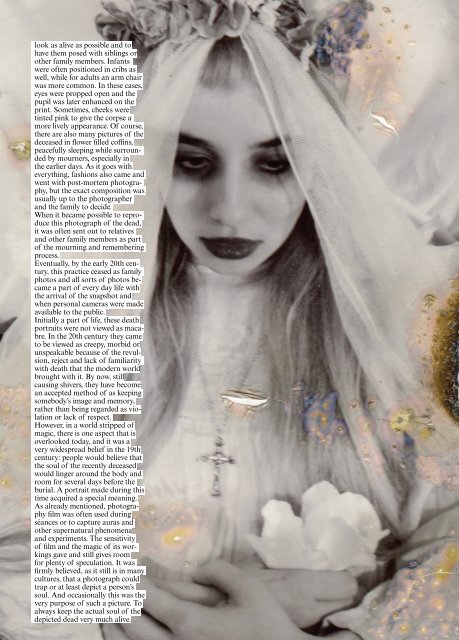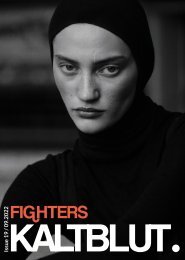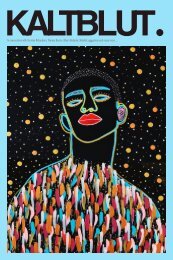COLLECTION 6
You also want an ePaper? Increase the reach of your titles
YUMPU automatically turns print PDFs into web optimized ePapers that Google loves.
look as alive as possible and to<br />
have them posed with siblings or<br />
other family members. Infants<br />
were often positioned in cribs as<br />
well, while for adults an arm chair<br />
was more common. In these cases,<br />
eyes were propped open and the<br />
pupil was later enhanced on the<br />
print. Sometimes, cheeks were<br />
tinted pink to give the corpse a<br />
more lively appearance. Of course,<br />
there are also many pictures of the<br />
deceased in flower filled coffins,<br />
peacefully sleeping while surrounded<br />
by mourners, especially in<br />
the earlier days. As it goes with<br />
everything, fashions also came and<br />
went with post-mortem photography,<br />
but the exact composition was<br />
usually up to the photographer<br />
and the family to decide.<br />
When it became possible to reproduce<br />
this photograph of the dead,<br />
it was often sent out to relatives<br />
and other family members as part<br />
of the mourning and remembering<br />
process.<br />
Eventually, by the early 20th century,<br />
this practice ceased as family<br />
photos and all sorts of photos became<br />
a part of every day life with<br />
the arrival of the snapshot and<br />
when personal cameras were made<br />
available to the public.<br />
Initially a part of life, these death<br />
portraits were not viewed as macabre.<br />
In the 20th century they came<br />
to be viewed as creepy, morbid or<br />
unspeakable because of the revulsion,<br />
reject and lack of familiarity<br />
with death that the modern world<br />
brought with it. By now, still<br />
causing shivers, they have become<br />
an accepted method of as keeping<br />
somebody’s image and memory,<br />
rather than being regarded as violation<br />
or lack of respect.<br />
However, in a world stripped of<br />
magic, there is one aspect that is<br />
overlooked today, and it was a<br />
very widespread belief in the 19th<br />
century: people would believe that<br />
the soul of the recently deceased<br />
would linger around the body and<br />
room for several days before the<br />
burial. A portrait made during this<br />
time acquired a special meaning.<br />
As already mentioned, photography<br />
film was often used during<br />
séances or to capture auras and<br />
other supernatural phenomena<br />
and experiments. The sensitivity<br />
of film and the magic of its workings<br />
gave and still gives room<br />
for plenty of speculation. It was<br />
firmly believed, as it still is in many<br />
cultures, that a photograph could<br />
trap or at least depict a person’s<br />
soul. And occasionally this was the<br />
very purpose of such a picture. To<br />
always keep the actual soul of the<br />
depicted dead very much alive.<br />
67

















